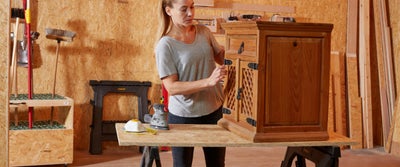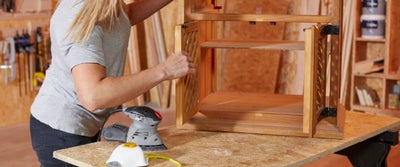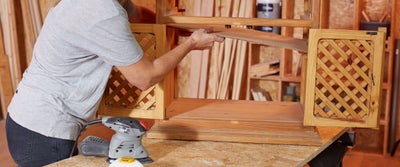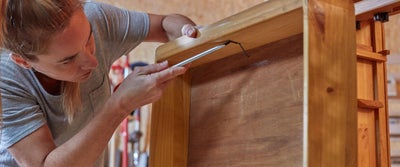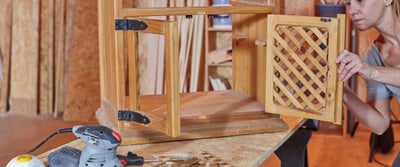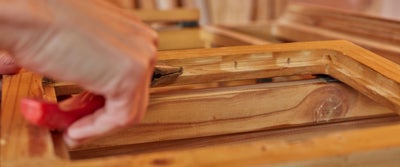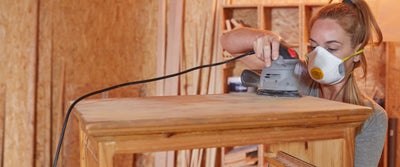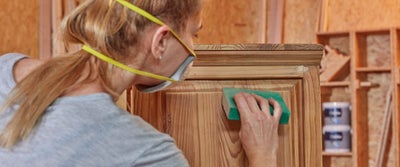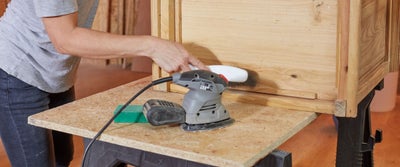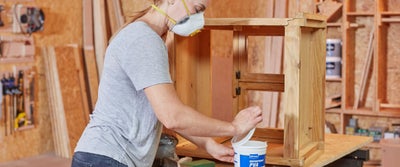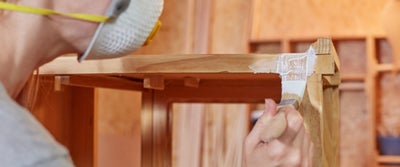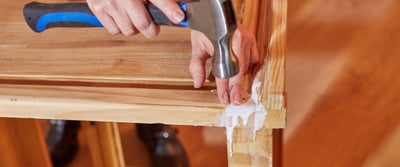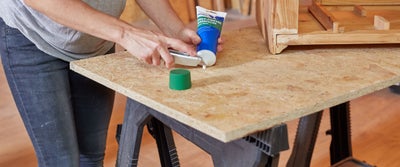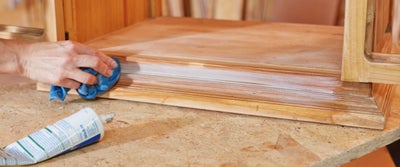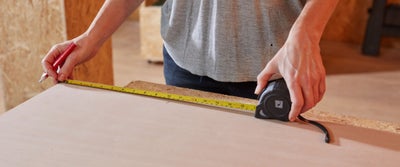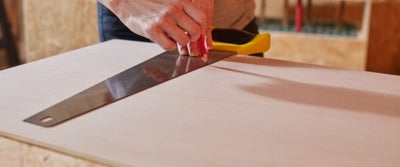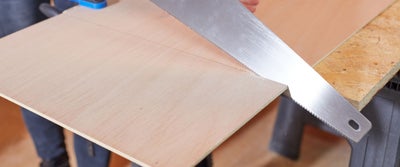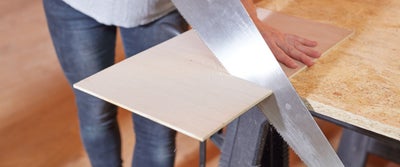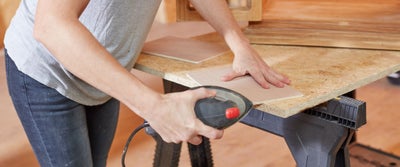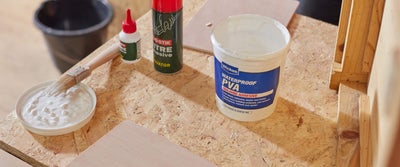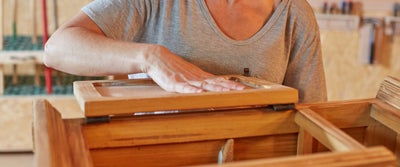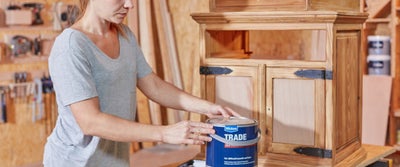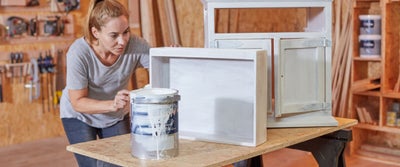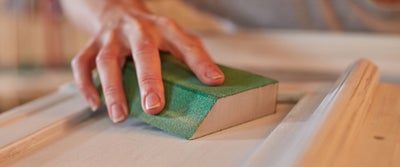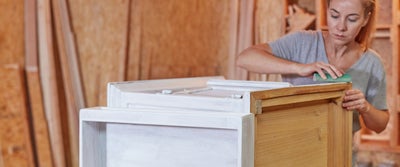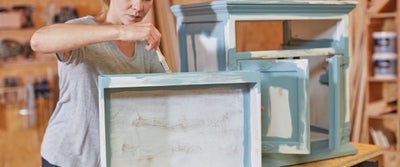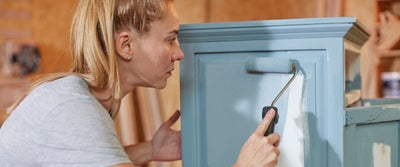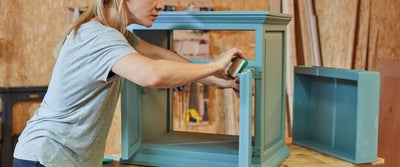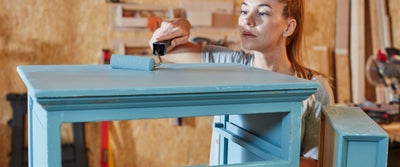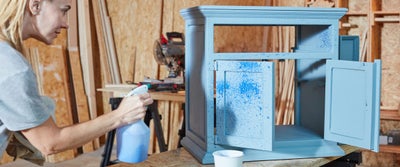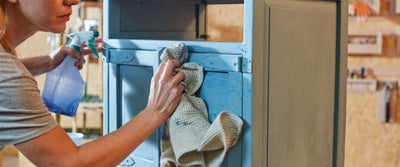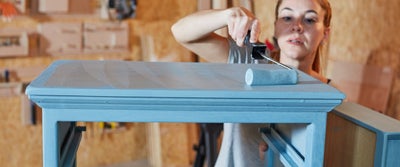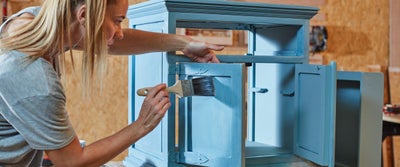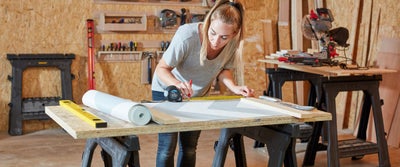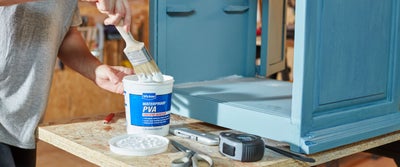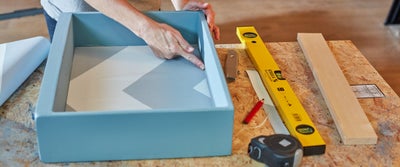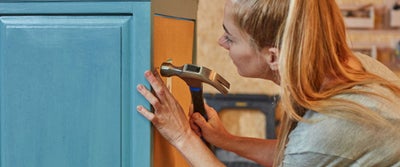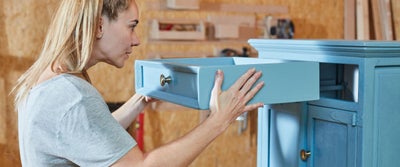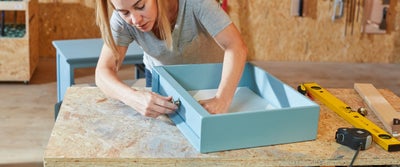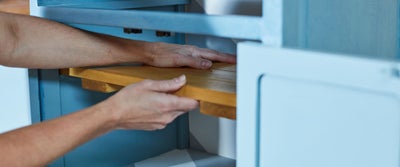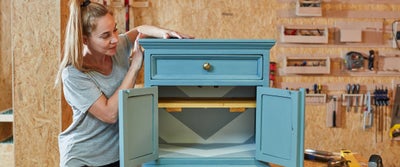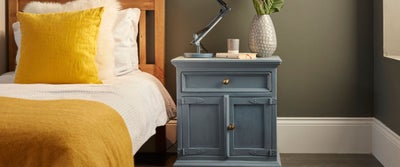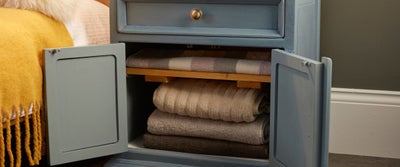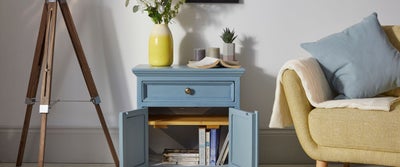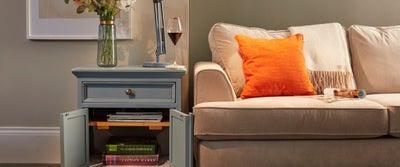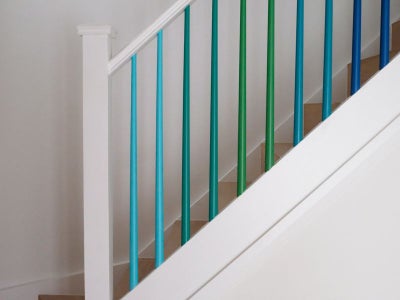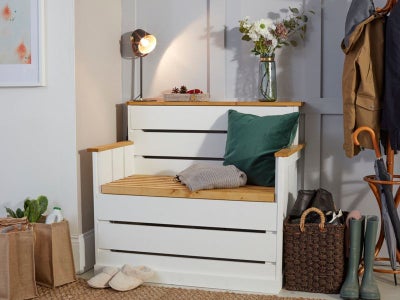How to upcycle a bedside table
TOOLS
MATERIALS
Planning & preparation
- We are going to show you how to renovate a bedside table with a range of step by step techniques.
- Reviving a tired piece of furniture or upcycling an unloved unit is an affordable and fun way to transform your interior décor with a custom design.
- There’s lots of room for creativity with this project. This project is completely bespoke to the piece of furniture you have to work with and the steps you undertake will depend on the condition of the piece.
- It’s also a great way to use leftover materials from previous projects and have a go at trying new decorative techniques.
- We recommend having a look through magazines and social accounts for ideas and the latest decorative trends before you begin. This will give you a plan of action for completing your project.
- You can add, remove and replace as many elements as you like. Use the piece of furniture as a shell for a creative makeover and experimental decoration. Or give the piece a once over and repair job, complete with a new finish and fittings.
- We decided to repair, prime and paint our piece, adding new parts and fixings, but you can revive your unit with any number of creative techniques, including varnishing, lime waxing and staining.
- Depending on what you have to hand, the materials for this project will cost around £30 and take a DIYer with moderate skill approximately 7 hours to complete. We recommend allowing a weekend to complete this project, to allow for repair works and decorative dry times.
Doing it right
- For this project or any other furniture restoration project, a degree of planning and patience is required. Glueing, pinning and painting all require sufficient drying times so it’s important not to rush for the best finishes.
- If you’re cutting new timber fixtures to size, ensure the timber is securely clamped to your workbench before you begin. Then slowly cut along your scribed line with a clean and sharp saw blade.
- If you try out a new technique and you’re not happy with the finish, simply sand back the dry surface and start again. There is no right or wrong with creative design as this will depend on your style, taste and skill.
- Watch our top tip videos for our Wickes DIY skills, tips and advice.
Staying safe
- Make sure you have appropriate safety wear to hand including gloves, goggles and a dust mask for sanding or cutting timber.
- Always ensure that your working space is well-lit and ventilated, especially when working with paint and decorative finishes.
- Always check the manufacturer’s label before applying any paints, stains or treatments.
